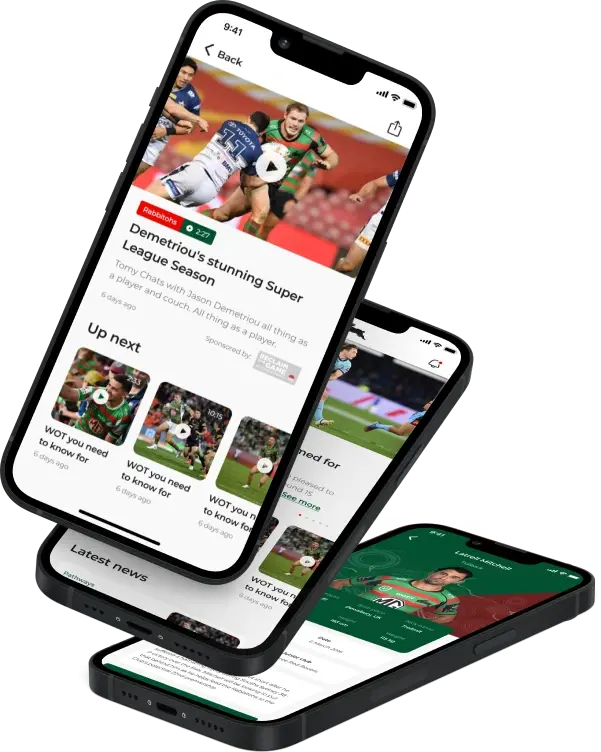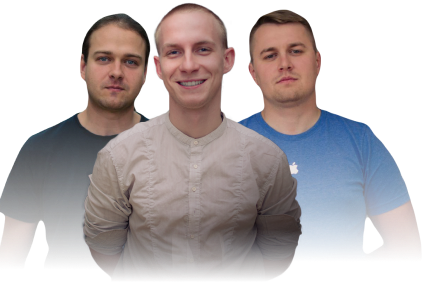With the full onset of Artificial Intelligence (AI), gym apps are redefining the way we work out. New advanced apps offer an in-depth level of personalization, guidance, and overall efficiency of training. Gym apps are the go-to for the widest audience of potential users. Obviously, everybody needs to keep fit.
While the fitness apps segment is steadily growing in value to hit over $19 billion in market shares in 2023, we are looking at some of the top fruitful areas to introduce a solution of your own. And to reap all the profits, of course. One thing you need to make sure of is that you know how to deliver on a promise of high quality and efficiency of your app.
To make your life easier when building a market-defining AI gym app, we shall explore the remarkable potential of AI-powered fitness apps and go over the intricacies of implementing one. But let’s start from the top.
Why Go for an AI-Powered Gym App?
From a pure business perspective, filling the niche with a good solution that is really enjoyed by users is a well-tried way to grab a good chunk of profits. But there’s more than that. Leveraging the features enabled by AI, you can build something truly useful and unique, like an app brimming with the following end-user benefits.
Personalization beyond imagination
One of the standout advantages of AI gym apps is their unparalleled level of personalization. No two individuals are alike, and AI gets that. These apps adapt to the user’s fitness level, goals, preferences, and overall physical condition to curate tailor-made workout plans.
The raw power of data
AI gym apps are data powerhouses. They meticulously track your progress, analyze performance, and offer some unique insights. These insights are usually presented in user-friendly visual formats, allowing you to monitor achievements (e.g., tracking your weight loss journey or monitoring strength gains) and stay motivated.
AI coaches
AI gym apps introduce the concept of AI trainers that provide real-time feedback during workouts. They give professional corrections, encourage, and demonstrate exercises with precision. These AI trainers are not only knowledgeable but also infinitely patient.
Discover how AI helps to minimize injuries
Tailored dietary guidance
AI is also great at tracking your diet. AI-powered gym apps provide dietary suggestions that complement your fitness objectives. Whether you're looking to lose weight, gain muscle, or simply maintain a balanced diet, AI tailors its recommendations to align with your workout goals.
Community engagement and virtual challenges
Staying motivated can be challenging, but AI gym apps offer an awesome solution: community engagement. You get to connect with fellow fitness enthusiasts, share achievements, and even participate in virtual challenges. It's a digital support system that makes everybody feel included and able to engage in healthy competition.
Accessible and inclusive
AI gym apps are designed to be accessible to everyone. They cater to a diverse audience, from fitness newcomers to seasoned athletes. And for people living on a hectic schedule or those preferring to work out at home, these apps adapt to circumstances, making fitness truly inclusive.

Building Your Own AI Gym App
To build or not to build? You probably already have your approximate project roadmap, but the above opportunities should be convincing enough. So if you are approaching an app development kick-off, it’s crucial to have your basics straight. This includes having a consistent picture of all the work ahead.
Every project is unique, but the modern mobile app development algorithm is pretty established in the industry. All you have to do is adapt the common stages to specific goals (workout functionality, in our case) and financial limits. But before jumping in, we’d recommend settling on certain aspects separately, including preliminary analyses and the choice of technology.
Just to get a safe foundation for further workflows.
Identifying the audience
Knowing your user base, knowing it very well, is a must. The fitness journey is unique for each individual, and AI can tailor experiences accordingly. You just need to set a target audience for it.
Major gym app user segments break down into three broad categories:
- Novice fitness enthusiasts: Those taking their first steps into the fitness world, seeking guidance and motivation.
- Advanced athletes and gym freaks: Seasoned fitness fans looking to fine-tune their routines and achieve peak performance.
- Everyone in between: The vast majority of users falls somewhere on the spectrum between novice and advanced, each with their own goals and preferences.
Discovering must-have features
- Adaptive workouts: A good AI-powered gym app simply must offer customizable workout plans. Your task is to service each user individually, whether they need to gain muscle, lose weight, or just indulge in regular fitness.
- Performance insights: A high-quality fitness app also provides users with actionable insights into their workout progress through sophisticated data analysis. Visual representations of achievements make tracking and staying motivated easier than ever.
- Smart personal trainer: AI personal trainers are becoming a game-changer in ensuring proper form and optimizing workouts. Can’t miss out on this one.
- Nutritional guidance: You should certainly double down on general fitness guidance, where diet plays a crucial role. Enable your smart app to offer tailored dietary suggestions based on exactly the way this or that user is working out.
- Social connectivity: On top of ensuring social media sharing buttons (for Facebook, Instagram, you name it), you can build a whole new fitness community inside your app. For this, you must enable users to engage with each other, share achievements, and take part in virtual challenges.

Ensuring user privacy and data handling
While AI relies on user data for refinement and personalization, addressing privacy concerns is crucial. Users expect their data to be handled with care and transparency, so proper protection is paramount. What can you do about it in particular?
- Comply with regulations: Keep in tune with the latest data protection regulations (like Europe’s GDPR or California’s CCPA), and make sure your app complies with all standards. Compliance not only safeguards user data but also helps avoid legal consequences.
- Use data retention policies: Determine exactly how long you will retain user data and when it will be securely deleted. Inform users about these policies in your privacy documentation.
- Conduct security audits: Do regular security audits and penetration testing to identify vulnerabilities in your app's infrastructure. These tests simulate potential cyberattacks and help you proactively address weaknesses in your data security measures.
Case Study: A Mobile App for an Australian Rugby Club

Technology Behind the App
Creating a brand new AI gym app is a great chance to leverage cutting-edge technologies that shape an engaging and smooth user experience: This is the tech to power your next big solution.
Machine Learning (ML)
Machine Learning is the heart of AI gym apps. It leverages algorithms able to learn from data and make predictions or recommendations based on that info. In the context of fitness apps, ML is used for:
- Predictive algorithms: ML algorithms analyze user data, including fitness goals, workout history, preferences, and even biometrics like age and weight. These algorithms then generate adaptive workout suggestions. For instance, if a user's goal is weight loss, the app might recommend cardio-intensive workouts, which change over time to keep challenging the user as they progress.
- Hyper-personalization: As a result of the above, ML allows the app to tailor workouts and recommendations to individual users in the most insightful way possible.
Computer Vision
Computer vision is employed to monitor and analyze visual information from the user's device camera. In AI gym apps, computer vision technology is used for:
- Shape monitoring: During workouts, the app uses computer vision to track the user's movements and exercise form in real time. It can detect deviations from the desired shape and provide immediate feedback to help users maintain progress and reduce the risk of injury.
- Visual demonstrations: Computer vision can also efficiently visualize exercises. If a user is unsure how to perform a particular movement, they can activate this feature to see a virtual trainer demonstrating the correct technique.
Natural Language Processing (NLP)
NLP technology enables the app to recognize and adequately respond to human language. In AI gym apps, NLP is used for:
- Voice assistants: Voice commands streamline your usual user experience greatly. They can be used to initiate workouts, pause or resume sessions, and even ask for exercise tips. Voice assistants make workouts more efficient by allowing users to stay focused without the need to touch their devices.
- Feedback and motivation: NLP is used to provide real-time feedback and actively motivate users during workouts. Voice assistants can congratulate users on completing a set, offer words of encouragement, or provide instructions.
Data analytics and big data
Data analytics and big data technologies are leveraged to collect, store, and analyze user data. This includes information on workouts, progress, and user behavior. These technologies enable performance insights. The app can provide users with detailed analytics and visual representations of their workout progress, helping them track achievements and stay motivated.
Augmented Reality (AR) and Virtual Reality (VR)
Some advanced AI gym apps incorporate AR and VR technologies to create immersive workout experiences. Users can engage in virtual workouts, interact with virtual trainers, and even exercise in simulated environments. This immensely popular tech adds an element of fun and engagement to fitness routines.

Your Usual App Development Process
With all the preliminary points out of the way, it’s time to prepare for a full-on development project. While the final tech stack may differ from project to project (this is where you should get some pro expertise to guide you), these will most probably be the main stages:
Planning
This initial phase is the blueprint for your AI gym app's success. Here's what it entails:
- Defining objectives: Clearly articulate what you aim to achieve with your AI gym app. Is it focused on personalized workout plans, advanced performance analytics, or a combination of features? Your objectives set the direction for the entire development process.
- Analyzing target audience: Understanding your target audience is crucial. Identify their fitness levels, goals, preferences, and pain points. This information guides feature prioritization and design choices.
- Picking key features: Based on your objectives and target audience, determine the key features your AI gym app will offer. These could include any of the features listed above.
Design
This phase focuses on creating an intuitive, visually appealing, and user-friendly interface. This is where designers are involved with:
- User Interface (UI) design: Crafting the visual elements of your app, including layouts, color schemes, and typography. The UI should align with your brand in terms of visuals and grant hassle-free interactions in terms of functionality.
- User Experience (UX) design: UX design ensures that the app is easy to navigate and user-centric. This is where specialists outline user flows and create tailored wireframes and prototypes to optimize the app's functionality and usability early on.
Development
This phase brings your AI gym app to life, integrating AI algorithms and technologies:
- AI algorithm integration: Develop or integrate AI algorithms that power the core functionalities of your app. This includes the AI's ability to recommend workouts, analyze user data, and provide real-time feedback.
- Backend development: Build the server-side part that empowers your app's performance and functionality. This includes database management, user authentication, and data storage.
- Frontend development: Implement the designs created during the design phase. This involves coding the user interface, integrating AI components, and ensuring the app functions as intended.
Let’s build software tailored to your needs
Testing
Thorough testing is crucial. It is the way to guarantee your AI gym app delivers a smooth and accurate user experience:
- Functionality testing: Test all app features to ensure they work correctly. This includes checking workout recommendations, performance tracking, and AI-driven functionalities.
- Usability testing: Gather feedback from users or testers to assess the app's usability. This helps identify any user experience issues that need improvement.
- AI accuracy testing: Validate the accuracy of AI predictions and recommendations. Ensure that the AI is providing valuable insights and guidance to users.
Release
Once testing is complete and any issues are resolved, it's time to launch your AI gym app to the public:
- App stores submission: Prepare your app for submission to app stores such as the Apple App Store and Google Play Store. Follow their guidelines for app submission and review.
- User onboarding: Create a seamless onboarding process to guide users through setting up their profiles and accessing the app's features.
- Feedback analysis: Encourage users to share feedback and ratings. Monitor user reviews and comments to identify areas for improvement.
Continuous refinement
App development doesn't end with the release. In order to maintain TA engagement, you should continuously refine and enhance your AI gym app based on user feedback and emerging technologies. Regular updates and improvements ensure your app remains competitive and valuable to users.

All in all, a good app creation workflow relies on careful planning, thoughtful design, robust development, rigorous testing, a successful launch, and ongoing refinement. With each phase executed meticulously, you can create an AI-powered fitness app that delivers an experience that truly stands out.
Addressing Development Challenges
As with any innovative technology, AI gym apps face challenges. These include:
- gaining user trust in AI recommendations
- ensuring AI accuracy
- addressing concerns about AI replacing human trainers
Now, how do we mitigate these challenges?
- transparent communication
- continuous improvement
- maintaining the human element in fitness guidance
These pro tips should do the trick. The only other major thing you must take care of is further scalability in line with the times and circumstances.
Scalability and Future Growth
AI gym apps are poised for scalability and expansion. The more they are used, the more data an underlying AI gets to self-develop and perfect. On top of that, you certainly should try adding emerging features to your app over time.

Namely, your future growth possibilities may include incorporating augmented and/or virtual reality for immersive workouts, expanding social features, and integrating with wearable devices for comprehensive health monitoring.
Requestum Case Study
We share our experience on how we used computer vision to create a web application for home workouts that evaluates exercises in real-time. This application should allow users to select an example exercise and then attempt to replicate it, providing immediate feedback on their performance.
During the development of this web application, we focused on the following key activities:
-
Integration of Pose Estimation: We implemented pose estimation using MediaPipe POSE to accurately track and analyze the user's movements during exercises.
-
Applying Time Series Comparison: To assess the accuracy of the user's exercise performance, we utilized the Dynamic Time Warping (DTW) algorithm.
-
Enabling Real-Time Video Stream Processing: The application was developed to process video streams in real-time, ensuring that users receive immediate and relevant feedback as they perform the exercises.
Bottom Line
AI-powered gym apps are revolutionizing the fitness industry as we know it. And you get all the chances to stand at the forefront of that revolution. As we embrace this fitness-tech synergy, the possibilities for healthier, happier lives are endless. So why wait?
One last thing you need to get through all the preparations, decisions, and app creation takeaways is a reliable team of developers, designers, and specialized professionals.
Hire AI specialists at Requestum to save time, hidden expenses, and nerves. Contact us to discuss your future project in detail and get some pro consulting.

Our team is dedicated to delivering high-quality services and achieving results that exceed clients' expectations. Let’s discuss how we can help your business succeed.


SHARE: